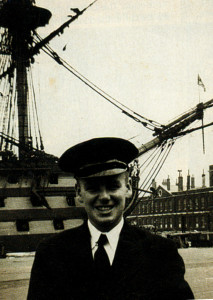
MY National Service was deferred until I had completed my engineering apprenticeship in 1954. After a medical in Leicester I had to decide my choice of services: it was Royal Navy first and the RAF second. Neither my father nor my grandfather thought much of my selecting the Royal Navy, though, as they were both regular soldiers.
My call-up papers arrived, along with my train fare from my home in Stamford. I was to report to the Royal Navy barracks in Portsmouth. Alighting from the train I could see that every young male was heading one way -towards the barracks, so there was no need to ask
which way to go.
I was lucky to be offered the Senior Service, as not many had that opportunity. During the first two weeks I took an engine room artificer’s trade test. The time allowed for this was 40 hours, which involved fitting a jib and cotter through a strap, complete with block. No machine tools were allowed to be used except for a pillar drill, hacksaw and filer. During this period I wore civvies and received ten shillings pay.
I passed the test and became an ERA Class 5, with the rank of Leading Hand (Killick is the Naval term). If I had failed it would have been a train journey down to Plymouth, to train as a stoker.
Following this was six weeks’ square bashing before I had my first 48-hour pass to go home.
A further six weeks were spent on a boiler and steam course in Portsmouth Dockyard. Because I had only served a four-year apprenticeship at the time of my call-up, I had to serve one year in the Navy before I became an ERA Class 4, with the rank of petty officer.
Submerged
A few weeks followed in the barrack workshops before orders to report to HMS Marvel, a minesweeper with crew of 86. She was in Portsmouth Dockyard, part of the Home Fleet.
Much time was spent at sea, looking after the machinery and gear in the two boiler
rooms. This was mostly down at Portland, exercising with submarines, and I did manage a trip out in one.
For my final six months I was paid a full regular’s wage, £10.10s per week. Maybe this was an enticement for me to sign on!
My two years’ National Service ended in September, 1956, when I returned to Civvy Street to my old job. One of the conditions following National Service was that your previous employer had to take you back onto their payroll.
Brian Curtis, Bourne, Lincolnshire








